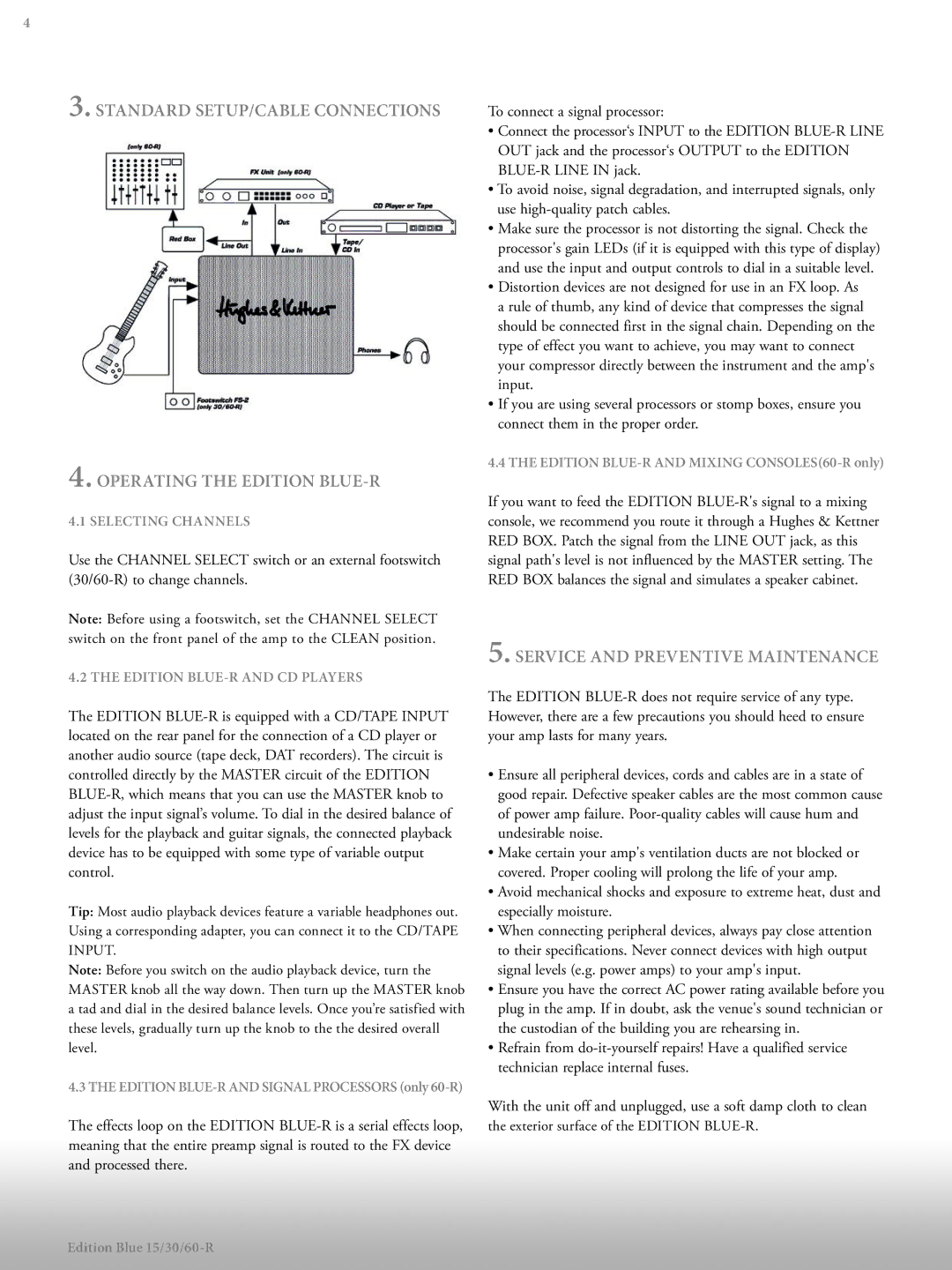96, 100, 50 specifications
Hughes & Kettner is a renowned name in the world of guitar amplification, and their series of amplifiers such as the 50, 100, and 96 models showcase the company's dedication to sound quality and innovation. These amplifiers are designed to meet the diverse needs of guitar players, offering a range of features that cater to both live performances and studio recording.The Hughes & Kettner 50 model is a versatile powerhouse, delivering 50 watts of tube-driven tone that is perfect for both practice and performance. Its compact design makes it highly portable, yet it still packs a punch with its dynamic range and tonal versatility. The 50 features a classic-style control panel, allowing users to easily dial in their desired sound. Its clean channel provides a warm, rich tone, ideal for a variety of genres, while the gain channel allows for a gritty overdrive that brings out the harmonic richness of distorted tones.
Stepping up, the Hughes & Kettner 100 model offers 100 watts of power, making it a formidable choice for larger venues. This amp is equipped with advanced tone-shaping capabilities, including multiple ECC83 and EL34 tubes that provide unparalleled warmth and responsiveness. The 100 model also features a built-in reverb and effects loop, enabling players to integrate their favorite pedals and effects seamlessly into their rig. With its sturdy construction, this amplifier is built to withstand the rigors of touring.
Finally, the Hughes & Kettner 96 model is designed with cutting-edge technology, featuring a digital modeling system that allows players to access a vast array of tones and effects. This amp provides the flexibility of emulating classic amplifiers while also offering modern digital conveniences. The 96 incorporates an intuitive user interface, allowing for easy navigation between settings. Additionally, it features USB connectivity, making it perfect for recording directly into a DAW or for re-amping sessions.
Overall, the Hughes & Kettner 50, 100, and 96 models exemplify the brand’s commitment to quality and innovation. With robust construction, powerful sound capabilities, and modern technology, these amplifiers are ideal for any guitarist seeking to enhance their sound, whether they are practicing at home or performing on stage. Each model embodies the perfect balance between traditional craftsmanship and modern advancements, making them a staple in the collection of aspiring and professional musicians alike.

